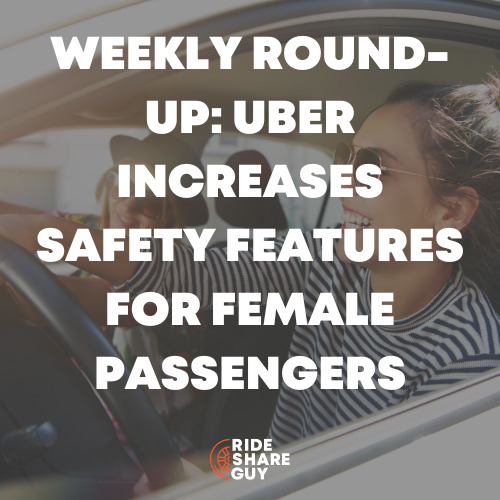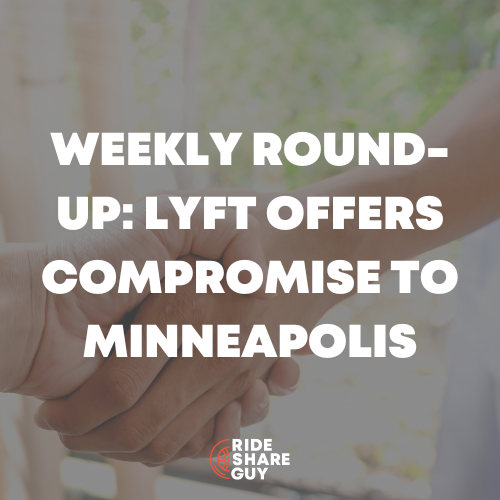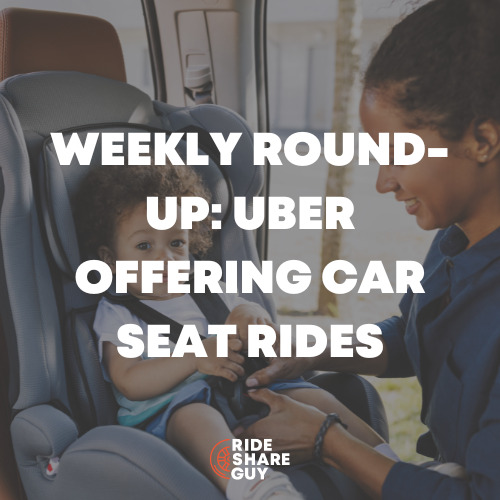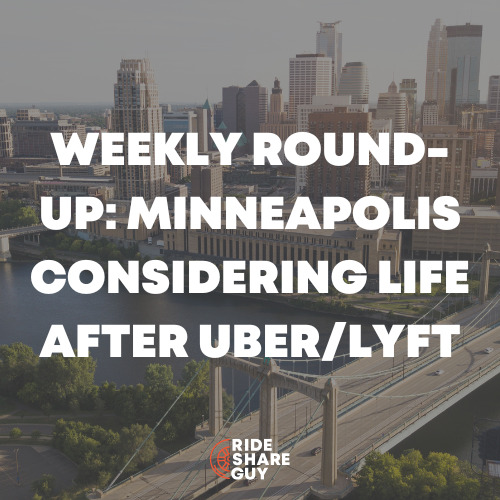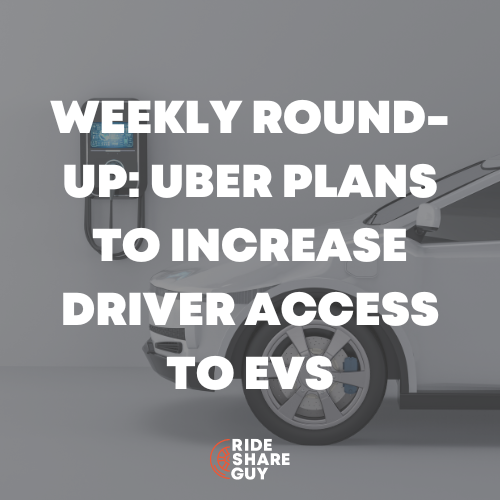With the recent staggering announcement that Uber lost more money in a quarter than all but three public companies lost in a whole year, focus has turned to Uber’s profitability and expenses. Senior RSG contributor John Ince covers the latest Uber news, including concerns about structural issues and more, in this week’s roundup.

Uber’s Profitability Problem Is Structural [Seeking Alpha]
Sum and Substance: Investors have been sold the vision of a company which will dominate large parts of the transportation industry, yet Uber presents no clear path to profitability.
Autonomous vehicles and drones are the future of the transportation industry, but the value created by these technologies will be captured by technology leaders like Google, GM and Amazon.
Uber is unlikely to ever be profitable and has no intrinsic value. Uber’s (UBER) valuation assumes it will hold large amounts of the ride sharing, food delivery and freight businesses globally, which is highly unlikely in my opinion. I believe Uber’s business model is not viable and they will continue to lose money until the technology behind drones and autonomous vehicles matures to the point where Uber becomes obsolete.
Uber operates in the mobility-as-a-service space and has 3 platform offerings (Uber, Uber Eats and Uber Freight) providing ride sharing, food delivery and freight services. They currently have a presence in over 700 cities spread across 6 continents with 99 million Monthly Active Platform Consumers (MAPC). Uber was born out of the creation of the sharing economy and enabled by smartphone technology with their biggest innovation being the provision of trust, so that strangers were comfortable providing each other rides. This innovation was similar to Airbnb, who provided trust so that people were comfortable allowing strangers to stay in their home and is an important component of the sharing economy in general…
Regardless of Uber’s growth story, the nature of its business will likely make it difficult for it to ever be profitable. Uber’s platforms enable the provision of commodity services, where purchasing decisions are made almost solely based on price. This is supported by the price elasticity of demand for Uber’s services, which is highly elastic, meaning consumers are very price sensitive. Based on information from Uber’s head of economic research the price elasticity of demand for ride sharing is 1.35. This is not surprising as a large part of Uber’s success is the result of unleashing latent demand by under cutting taxis on price. This is exacerbated by Uber relying on contractors and not employees, as many drivers work for multiple services there is little that differentiates Uber…
If and when Uber chooses to reduce incentives, there is no reason to think drivers and consumers will not abandon the platform. Uber appears to be trying to increase bargaining power with riders and drivers through scale but given the lack of barriers to entry in the industry this is unlikely to be successful…
The dynamics on Uber’s platform between riders and drivers more closely resembles a predator-prey model, where there are two populations with feedback between them. The size of the two populations is not important, it is the balance between the populations which matters. If the number of riders grows, Uber becomes less valuable to riders unless the number of drivers also grows and vice versa. A rider wouldn’t care if there is 1 driver or a million, as long as there is a driver available when I need one. For an Uber competitor there is the significant task of creating a minimum pool of drivers and riders to be viable, but once this is achieved Uber has no scale dependent advantage in providing services to riders or drivers. …
My Take: It’s well worth a click through to read the original article in its entirety with charts. Unless one rejects this author’s research out of hand, I don’t see how any reasonable investor can continue to put money in this company.
It’s always been the underlying structure of the industry that concerned me. Uber and Lyft got a toehold on the taxi business by subsidizing fares with investor capital. We’re now more than 10 years into this game and Uber is still reporting astounding losses. And as for the delusion that Uber can one day be the king of driverless cars… I don’t see it happening. Waymo and GM are already too far ahead.
Opinion: Uber’s own numbers show why investors shouldn’t believe in its vision [Marketwatch]
Sum and Substance: Uber’s stock fell 12% after it missed expectations on bookings, revenue and users when it reported earnings on Aug 8. The stock has continued to decline and recently hit an all-time low of below $34 a share, 25% below its IPO price of $45 a share.
Uber’s UBER, +2.31% slowing growth and mounting losses reaffirm our belief that this stock has no viable path to justifying its valuation. Even after the stock’s post-IPO decline, it remains significantly overvalued.
We’re not going to talk about Uber’s losses here, even though the amount of money the company loses (its operating cash flow was -$1.6 billion in the second quarter) is astonishing. Everyone knows Uber loses money. At this point, the amount of money you’re able to lose seems to be a point of pride in Silicon Valley.
Instead, let’s talk about the story Uber wants to highlight for investors. According to Uber, it is still in the early stages of capturing what it estimates to be a $12 trillion (yes, that’s trillion with a “T”) total addressable market that includes personal mobility, food delivery, and freight shipping. For context, the World Bank estimates that global GDP was around $80 trillion in 2017. Uber is saying it thinks it can capture 15% of global economic activity…
My Take: It’s good to see some of the mainstream financial websites giving credence to the message we’ve been putting forth here for some time. The big unknown in this industry is where drivers will go when the economics of the gig become truly unbearable.
Advertisement: click here to learn how to save money on every gallon of gas you buy
The San Francisco Uber office was reportedly spending $200,000 a year on balloons [SF Gate]
Sum and Substance: As adults, it can be difficult to ascertain the passage of time — and for Uber employees, it’s about to get a bit harder. As the company attempts to slim down its operations, employees’ work anniversaries will no longer be marked by the arrival of a bunch of helium balloons at their desks.
According to Crunchbase News, Uber chief financial officer Nelson Chai, emailed employees earlier this month to announce that balloons were being cut from the budget. Instead, the company is switching to stickers to mark “Uberversaries” — which will save the company more than $200,000 a year at its San Francisco offices alone.
“It’s not only a great way to find dollars we can invest back into the business, it’s also more environmentally friendly,” Chai’s email said.
Besides this one oddly specific cutback, there is no indication that corporate Uber employees will stop receiving other perks, such as free food in the office, unlimited paid vacation, and discounts on Uber rides and Uber Eats orders.
My Take: You know that Uber’s PR team has lost control of its message when a story like this goes viral on the web. $200,000 a year is a mere footnote to a company that lost $5 billion last quarter, but this expenditure is so absurd that it captured the imagination of the media and their audiences. It gives a hint as to how a company could be losing such astronomical sums quarter after quarter.
Things were supposed to be different under CEO Dara Khosrowshahi, but apparently it’s taking even longer than we thought for him to leave his imprint on the company. Meanwhile, we can only hope that employees affected by this change will be able to accept the policy without getting deflated.
Readers, what do you think of this week’s round up?
-John @ RSG
